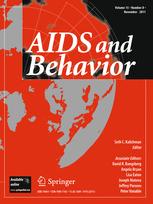Abstract:
We examined the long-term effects of two interventions designed to reduce sexual risk behavior among African American adolescents. African American adolescents (N = 1383, ages 14–17) were recruited from community-based organizations over a period of 16 months in two northeastern and two southeastern mid-sized U.S. cities with high rates of sexually transmitted infection (STI). Participants were screened for three STIs (gonorrhea, chlamydia, and trichomoniasis) and completed an audio computer-assisted attitude, intention, and behavior self-interview. Youth who tested positive for an STI (8.3%) received treatment and risk reduction counseling. In addition, television and radio HIV-prevention messages were delivered during the recruitment period and 18 months of follow-up in one randomly selected city in each region. Analyses determined effects of the media program for those receiving a positive versus negative STI test result on number of sexual partners and occurrence of unprotected sex. Adolescents who tested STI-positive reduced their number of vaginal sex partners and the probability of unprotected sex over the first 6 months. However, in the absence of the mass media program, adolescents returned to their previously high levels of sexual risk behavior after 6 months. Adolescents who tested STI-positive and received the mass media program showed more stable reductions in unprotected sex. Community-based STI treatment and counseling can achieve significant, but short-lived reductions in sexual risk behavior among STI-positive youth. A culturally sensitive mass media program has the potential to achieve more stable reductions in sexual risk behavior and can help to optimize the effects of community-based STI screening.
Authors
- Larry K. Brown
- Michael P. Carey
- Ralph DiClemente
- Michael Hennessy
- Daniel Romer
- Laura F. Salazar
- Bonita F. Stanton
- Sharon Sznitman
- Robert F. Valois
- Peter A. Vanable



